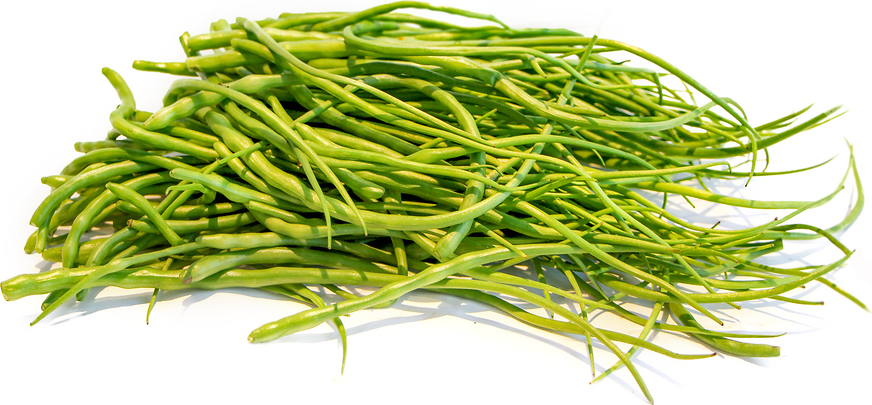


Sangri
Estimated Inventory, lb : 0
Description/Taste
Sangri pods grow on the khejri tree, which is a thorny evergreen that grows to around 5 meters in height. The slender pods are green when unripe, and turn a chocolate brown upon maturing. Each pod measures from 8 centimeters to 25 centimeters in length. The pods contain as many as 25 oval-shaped seeds embedded in a sweet, dry, yellow pulp. Sangri pods offer an earthy, nutty flavor that has spice-like notes of cinnamon and mocha.
Seasons/Availability
Sangri pods can be found growing in arid or desert climates year-round.
Current Facts
Sangri, botanically known as Prosopis cineraria, grows in dry, arid desert regions. Sangri are the bean-like pods of the khejri tree, which is a member of the pea family. All parts of the khejri tree, from the bark to flowers and leaves, are edible. Sangri pods, also known as “desert beans”, are used as a vegetable, and are particularly prized for their unique taste and nutritional benefits.
Nutritional Value
Sangri are rich in minerals such as potassium, magnesium, calcium, zinc and iron. They are a good source of protein and dietary fiber. Sangri pods also contain a moderate amount of saponins, which help to boost the immune system and lower cholesterol levels in the blood.
Applications
Sangri pairs well with spicy, pungent flavors like onions, mustard seeds, cumin seeds and red chilli. They are also used in curries, pickles and chutneys. A simple preparation of Sangri is to fry the pods in oil and serve them with salt and red chillies. In order to store Sangri, the fresh pods are dried. They must be soaked for a minimum of three hours before they are drained and cooked.
Ethnic/Cultural Info
The khejri tree is featured in Indian literature, and is used in the Ayurvedic medicine of India. The bark of the tree is used to help cure various ailments from dysentery to bronchitis. The pods are used as an astringent to help bring the body back into a balanced state. Sangri are an essential part of the regional cuisine of Rajasthan. They are used in Ker Sangri, a traditional dish that is served in homes, in high-end restaurants and at weddings. Sangri pods are cooked in spices and oil along with Ker, a caper-like desert fruit, to produce an earthy, rustic dish that is tangy, sour and spicy all at once.
Geography/History
Sangri is found in the desert regions of India, Afghanistan, Iran, Pakistan and Africa. It is mainly found in the Thar Desert of Rajasthan in India, where it is said to have originated. Because Sangri grows abundantly where other plants cannot, even flourishing on sand dunes, it is a plant product that is highly prized in the dry, arid regions where it is found. Sangri is used by nomadic people of the desert, as well as by villagers. Sangri was supposedly first used as a food source when famine-struck villagers of Rajasthan had nothing to eat. In the Rajputana famine of 1868 to 1869 in India the people of Rajasthan depended on everything from the bark of the khejri tree, to the carbohydrate and protein-rich Sangri pods, for sustenance.

Recipe Ideas
Recipes that include Sangri. One
| Vegetarian Khana |
|
Vegetarian Ker Sangri |
| Vegetarian Khana |
|
Ker Sangri |



